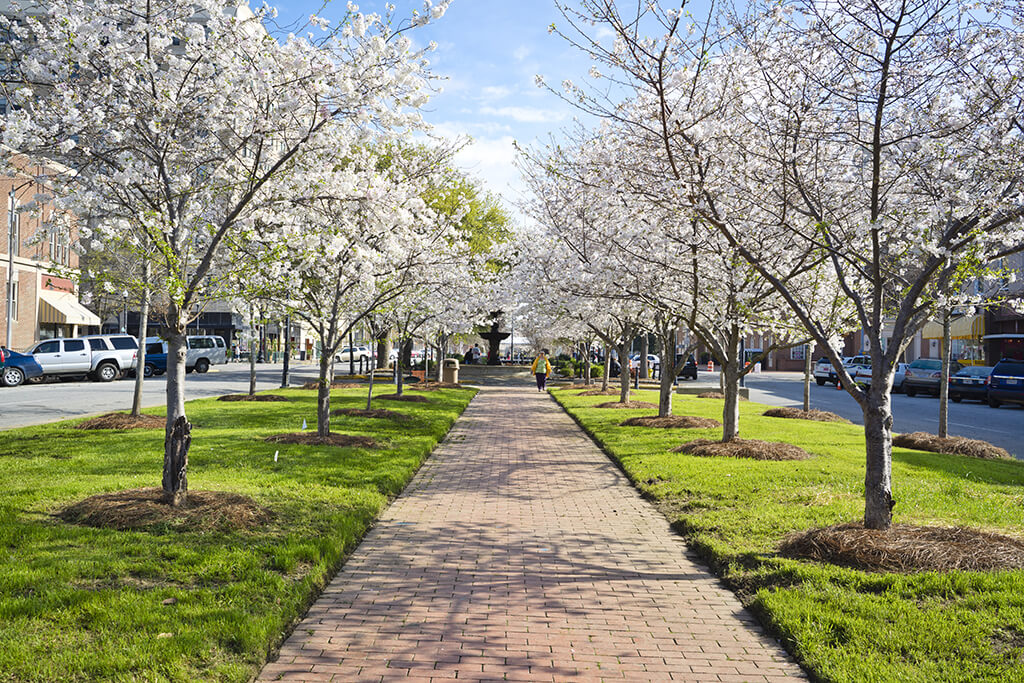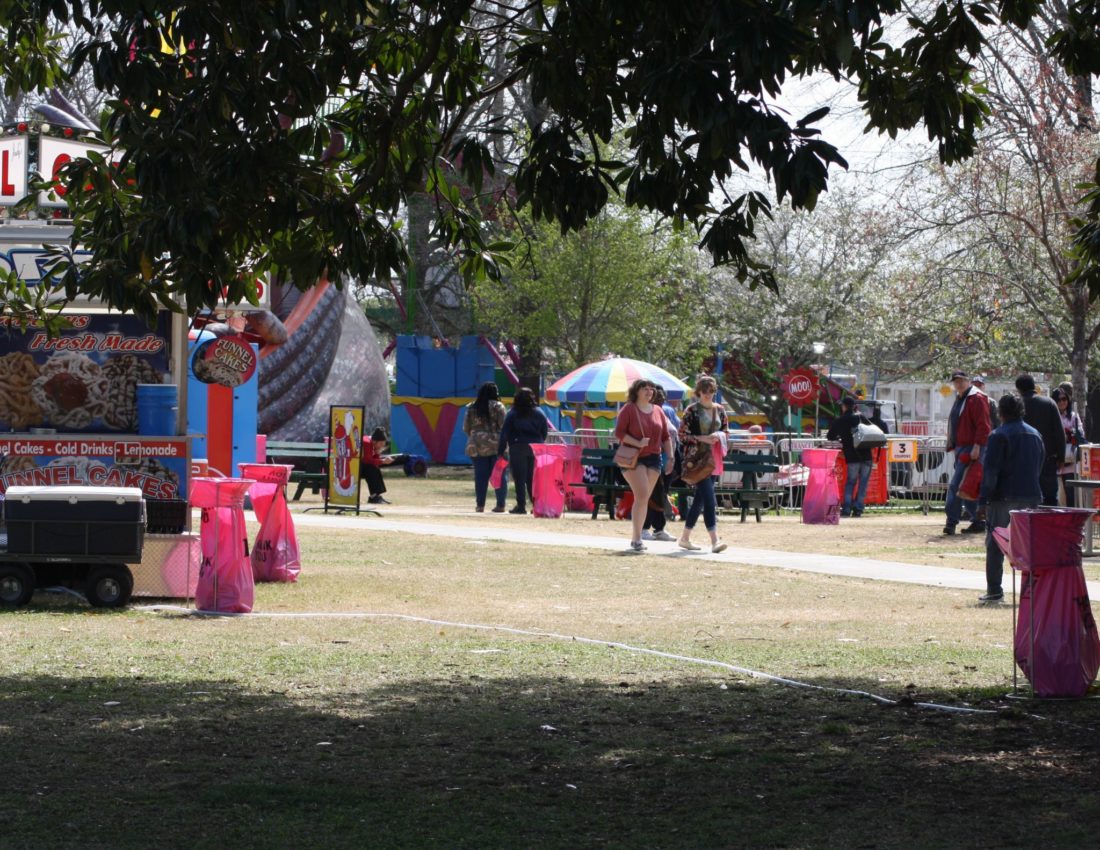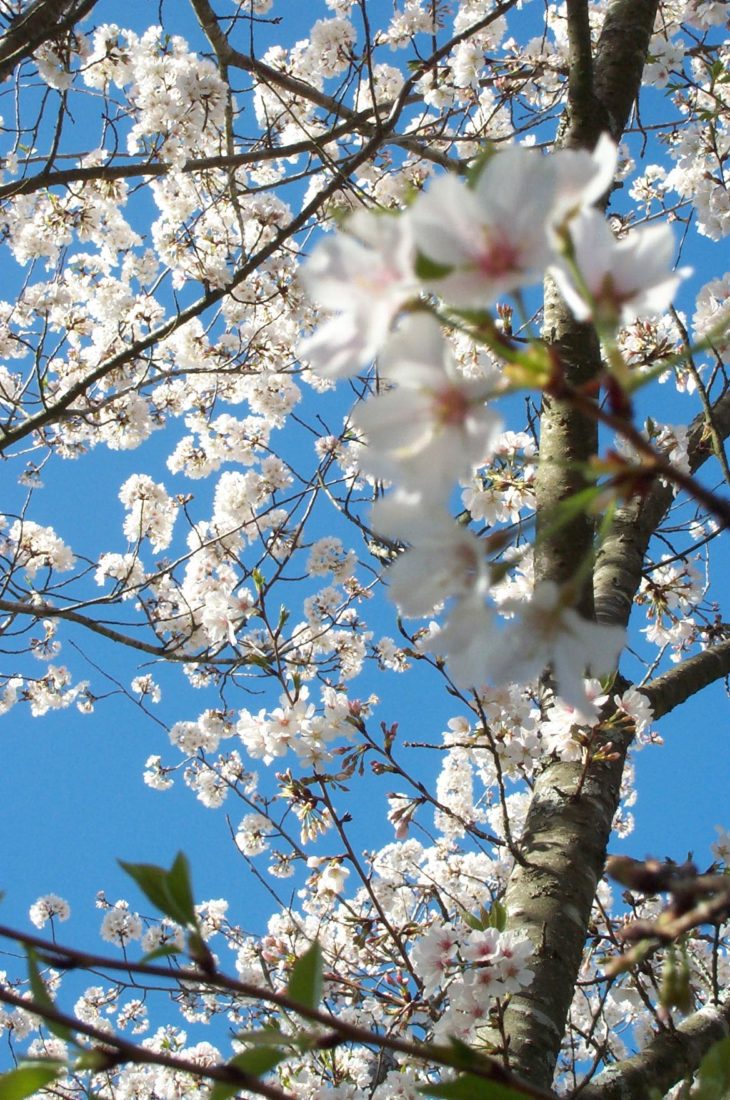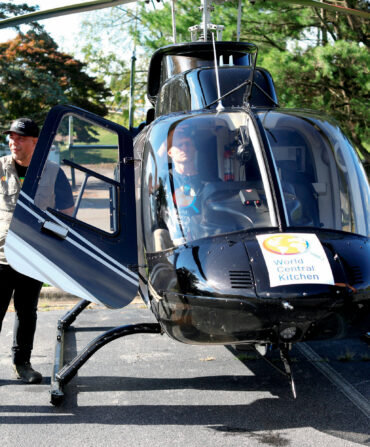If all goes according to plan, every March, the streets and neighborhoods of Macon, Georgia, burst into cotton candy hues as more than 350,000 Yoshino Cherry trees bloom, bringing with them hundreds of thousands of visitors who want to walk amongst the flowers at the city’s International Cherry Blossom Festival. Since the 1990s, the town has held the record for the most cherry blossoms in any one city in the world. “Most people think it’s in D.C. or somewhere in Japan,” says current festival president Stacy Moore. “But no, it’s right here in Macon.”

Photo: Courtesy of the International Cherry Blossom Festival
Cherry blossoms at Third and Cherry streets in downtown Macon.
In 1949, William A. Fickling, Sr., found a lone tree in his backyard budding pink in late March. After a business trip to Washington, D.C., a few years later, he identified it as a Yoshino Cherry akin to those surrounding the Tidal Basin. He began propagating the trees in his backyard, and soon, local flower enthusiast Carolyn Crayton asked if Fickling would help with a second planting in the town’s Wesleyan Woods neighborhood and help organize a giveaway to other Maconites. The blooms spread throughout the city, which now lays claim to nearly a hundred times more trees than the National Mall, and each spring, residents and visitors watch as they burst into color.
If nature cooperates, that is. For the past two years, it hasn’t.
In mid-March of 2017 and 2018, just as the trees began to bloom, fickle early spring weather commenced a cold snap, with temperatures dropping below freezing and killing the newly-opened buds. “They were just starting to bloom the week leading up to the festival,” Moore recalls. “Then came the hard freeze, which froze them all to death. It gave the city and the festival a whole different look.” While the past few weeks have seen prime weather ahead of this year’s festival, local horticulturists were concerned that 2018’s heavy rains could create a breeding ground for fungus that might affect the trees’ blossoms. Luckily, no such outbreak has occurred.

Photo: Courtesy of the International Cherry Blossom Festival
After 2018’s cold snap, there were very few cherry blossoms during the festival.
“Thankfully, the trees are cooperating this year. The first blooms came about a week and a half ago,” Moore says. “Some older trees in North Macon are more progressed now, while others downtown have not started blooming yet. That’s perfect—it means some will peak in the first weekend [of the festival] and others in the second.” To follow the blossoms yourself, check out the city’s bloom cam, set up on Wesleyan College’s campus. If those trees’ already-rosy branches are any indication of what’s to come over the next two weeks, Macon’s annual festival will once again be able to lay claim to the title “Pinkest Party on Earth.”








